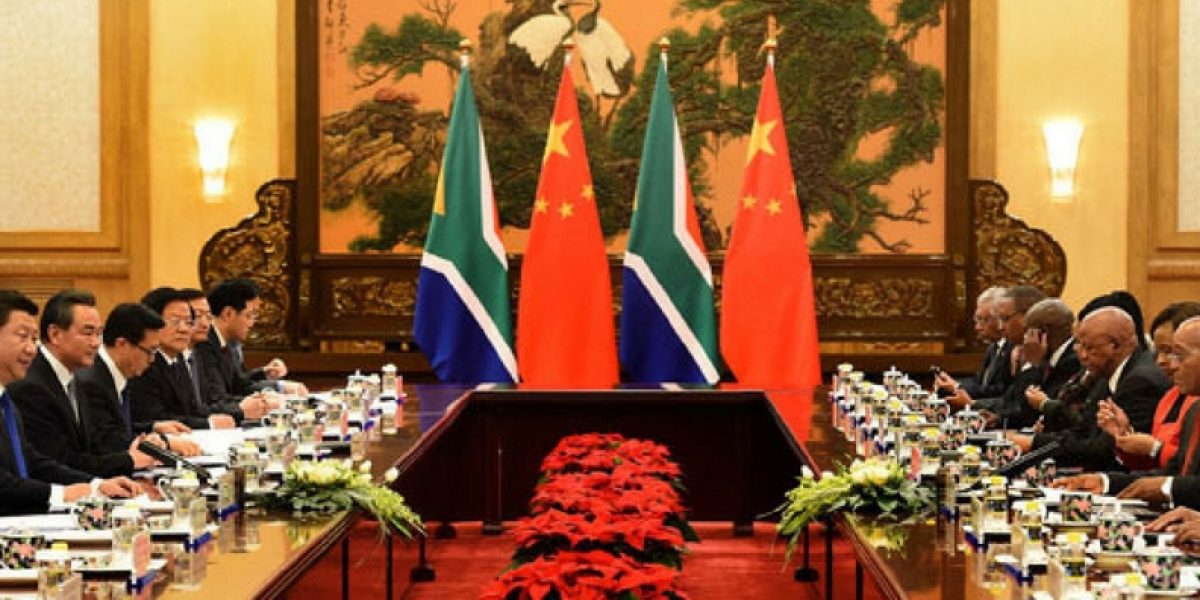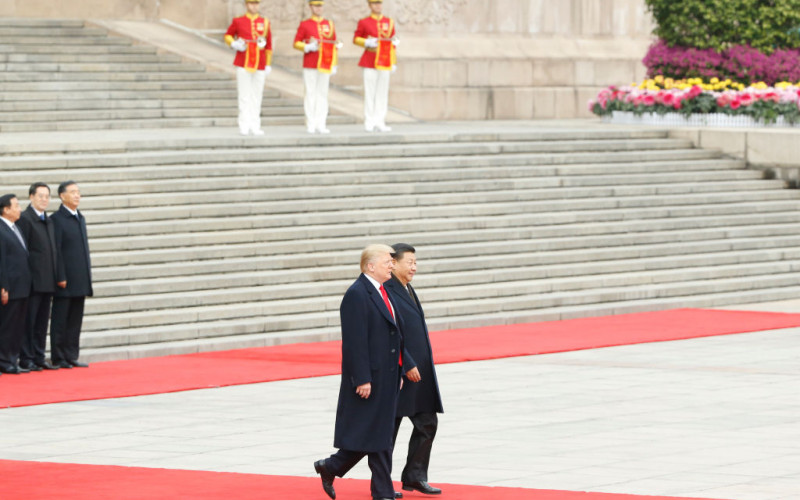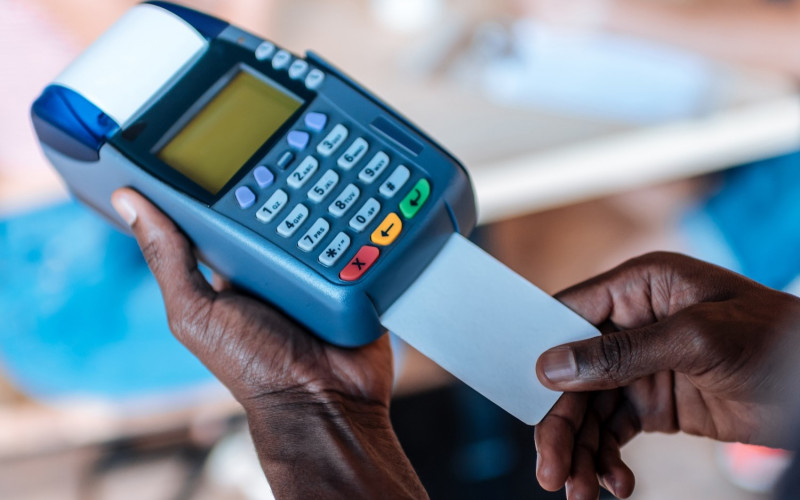When President Mandela took office in May 1994 he was immediately confronted him with a vexing foreign policy problem: how to balance South Africa’s diplomatic relations with the Republic of China (ROC) – a state of affairs inherited from the apartheid government – with the PRC’s One China principle which holds that the ROC is an integral part of China and that the PRC is the single and authentic authority that rules all of China.
It was widely expected that the new South Africa would soon recognise the People’s Republic of China. The world’s most populous country, the PRC possessed a rapidly growing economy and significant international influence including a permanent seat on the United Nations Security Council. It was also the global norm to acknowledge the PRC – at the time 159 states recognised China, while only 29 recognised Taiwan. Yet only in November 1996, thirty months after he took office, did Mandela announce the move he had long ‘agonised over,’ the switch from Taipei to Beijing.
Recently declassified archival evidence and interviews with former South African officials shed light on the texture and timing of this decision.
Dual recognition
In May 1994 the Department of Foreign Affairs (DFA) issued a document that stated:
President Mandela has expressed full confidence in the leaders of the PRC and the ROC and support for their efforts to resolve the China question…It is on this basis that the South African government would hope to strengthen and improve the relationship with the People’s Republic of China on the one hand, and the Republic of China on the other.
The Mandela administration had chosen not to choose. Instead, its approach was an unprecedented attempt at dual recognition. There were several reasons for this attempt. First, the ROC, commonly known as Taiwan, was South Africa’s sixth largest trading partner and a major investor in South Africa. When Taiwan’s President and Foreign Minister met Mandela the day after his inauguration they expressed eagerness to provide assistance to South Africa in a range of fields including agricultural development and vocational training – ‘provided diplomatic ties remain intact.’
Secondly, the ROC had donated 10 million USD to the ANC election campaign in 1993. Aziz Pahad, the former Deputy Minister of Foreign Affairs, recalls that Mandela believed, ‘you can’t dump friends after receiving so much assistance from them…’ A sense of loyalty combined with lucrative offers of assistance persuaded Mandela to continue ties with Taiwan.
Mandela’s uncertainty about the future of the PRC was another factor. Two cabinet ministers – Zola Skweyiya and Pallo Jordan – pointed out that the Soviet Union’s unexpected demise loomed large in their President’s thinking about the PRC’s longevity. Jordan commented:
…There was a little bit of uncertainty on his part about what would happen in the case of China. You had the Soviet Union, sixty years and then one day it was as if [a] snowball in the sun, gone. And I think he had the sense that the same sort of thing might happen in the case of China…
Dual recognition, if it could be achieved, was a prudent way of approaching the PRC without alienating the ROC. Whilst most South African officials thought the PRC would never accept this, a few scholars and a handful of senior officials believed that Mandela’s global stardom could help South Africa achieve what no other country had – formal relations with both Chinas. This attempt at dual recognition accounts for the delay in the switch.
Reasons for the switch
After two and half years of attempting a dual recognition approach President Mandela announced that South Africa would switch relations from Taipei to Beijing. What factors facilitated this this move?
One key reason is that many officials in the DFA believed South Africa needed to acknowledge the PRC. PJ Botha, an official in the Asia Directorate, believed that South Africa should ‘get in step with the rest of the world…’ by recognising the PRC. He argued, ‘you cannot be an international player, as South Africa wanted to be, and not recognise one of the permanent members of the Security Council. It was a no-brainer.’ Reporting and analysis by DFA officials emphasizing the costs of continuing to not recognise the PRC eventually made its way into briefing documents received by Mandela.
A second reason for the switch was that within the ANC there was a strong push to recognise the PRC. In 1996 Foreign Minister Alfred Nzo led a fact-finding mission to Beijing. His report stated ‘The Chinese leadership made it patently clear that they will never accept dual recognition and that the South African government should not endeavour to set a precedent in this regard.’ This assessment confirmed the majority view of the ANC’s National Executive Committee (NEC). Max Sisulu, an NEC member who accompanied Nzo on the mission explains, ‘We had made our decision collectively, so the ANC had decided that this is the best way to go…The recommendations coming from Nzo’s mission. And so, Madiba had to live with it. That’s the nature of a democracy.’ The locus of decision making was at Shell House (the ANC’s headquarters at the time), not the Union Buildings – Mandela did not make the decision to switch recognition, he adhered to it.
Another factor pushing South Africa to sever ties with Taiwan was increasing pressure from the PRC. Chinese officials would ‘remind’ their South African counterparts that if South Africa did not recognise the PRC access to Hong Kong’s markets and airspace would be restricted after the city-state came under Chinese suzerainty in July 1997. The PRC became impatient, even irate, at South Africa when Mandela referred to Taiwan as a country in August 1996, precipitating criticism in Chinese state-run media. Early in November 1996, Nzo sent a letter to Mandela which expressed ‘deep concern that our bilateral relations with the PRC have deteriorated to this low level…’ Nzo listed punitive measures the PRC was considering if South Africa did not make the switch including rescinding Pretoria’s Most Favoured Nation trading status. Rusty Evans, the Director-General of the DFA, recalled that the PRC ‘…Put it starkly to us that: “You either break off the relations now or you count us out.” Very much so. They played quite hardball at the end.’
Late in 1996 ROC officials indicated to their South African counterparts that the President and Foreign Minister of Taiwan planned to travel to South Africa in 1997. This proposed visit unintentionally accelerated South Africa’s choice between the two Chinas since Pretoria could not receive such a high-level delegation from the ROC without provoking the PRC. A decision had to be made. The combination of internal pressure from the ANC and DFA, as well as external pressure from the PRC contributed to Mandela’s announcement in November 1996 that South Africa would derecognise Taiwan, and establish relations with the PRC. After a lengthy period of negotiations formal relations between South Africa and PRC commenced in 1998.
The case of South Africa’s China choice indicates that scholars seeking to understand South African foreign policy decision making would do well to examine the relationship between the president and ruling party. While the president wields significant power in party and governmental structures, that power can be circumscribed. That the NEC deliberated and eventually overrode Mandela’s preference suggests that during this period ANC decision making procedures afforded room for open and robust debate.
Secondly, this case illustrates how power can aid a state in achieving its objectives. In the mid-1990s South Africa possessed large reserves of moral authority derived from its relatively peaceful transition and Mandela’s widespread fame and respect. This was not enough to overcome the PRC’s economic and political clout. The PRC stood firm on its One China principle and Mandela, pushed by his own party and officials from within the DFA, eventually dropped the dual China approach. Then, as now, South Africa could ill-afford to be on the wrong side of the PRC.
The writer thanks Claire Hurst for her assistance on this article and the research support.








